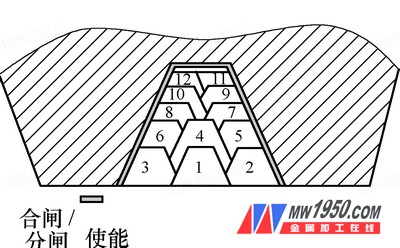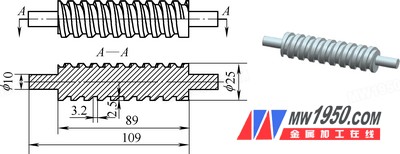1. Proposal of the Problem
(1) Introduction to Common Cycle Instructions for Thread Turning Thread turning is a machining process that involves creating a special spiral groove by maintaining a specific proportional relationship between the feed motion and the spindle rotation on a lathe. The shape of the thread is primarily determined by the geometry and positioning of the cutting tool, while the pitch is controlled by the tool's feed rate.
In modern Fanuc and Guangzhou CNC systems, three main methods are commonly used for threading: G32, which is a straight-cut method; G92, a fixed-cycle straight-through cutting method; and G76, a compound diagonal-feed cycle. The straight-through method is simple to program and easy to use, but it applies cutting force on both edges of the tool, leading to quicker wear and potential chipping. Therefore, it is typically used for threads with small pitches (P ≤ 2 mm). The oblique-feed method, on the other hand, allows for a single-sided cut, reducing the risk of chipping and improving tool life. However, when dealing with large-pitch or complex threads, these standard methods may cause vibration due to increased cutting forces and deeper cuts.
(2) Comparison of Common Cycle Command Machining Paths for Thread Turning The path for the straight-cut command G92 is illustrated in Figure 1, while the oblique-cut command G76 is shown in Figure 2. These two methods are widely used in CNC lathes, but their effectiveness can vary depending on the thread size and complexity.
In addition to the above techniques, the left-and-right cutting method is often employed for rough machining of large-pitch or multi-start threads. This approach allows for better chip evacuation and reduces cutting forces. As shown in Figure 3, the cutting sequence follows a specific order (1→2→3→4→5→6→7→8→9→10→11→12), and the depth of each pass can be gradually reduced. This not only improves the tool’s performance but also ensures a smoother finish after the final pass, where the sides and bottom of the thread are refined.

Figure 1 G92 Command Path

Figure 2 G76 Command Path

Figure 3 Left and Right Infeed Path and Sequence
With the help of macro programs, which offer advanced variable settings, logical judgments, and control functions, it becomes easier to handle complex thread profiles, including shaped, arc-shaped, and variable-sized threads. These programs allow precise control over the tool path and cutting parameters during deep-thread machining, ensuring high accuracy and efficiency.
2. Application Research Case
(1) Special-Shaped Thread Process and Cutting Amount Selection As shown in Figure 4, the middle section of the workpiece features a special-shaped thread with a pitch of 10 mm, a single-sided tooth depth of 2.5 mm, a flank angle of 30°, and a root width of 3.2 mm. The axial length of the thread is 89 mm, with 20 mm of φ10 mm sections on either end. The material used is 45 steel, and the thread is machined using a macro program.

Figure 4 Main Dimensions of the Profiled Thread and Its 3D Model
Solar Glass,Solar Panel Glass,Tempered Solar Glass,Ultra Transparent Solar Glass
SHANDONG TOP LEADER GLASS CO.,LTD , https://www.topleaderglass.com